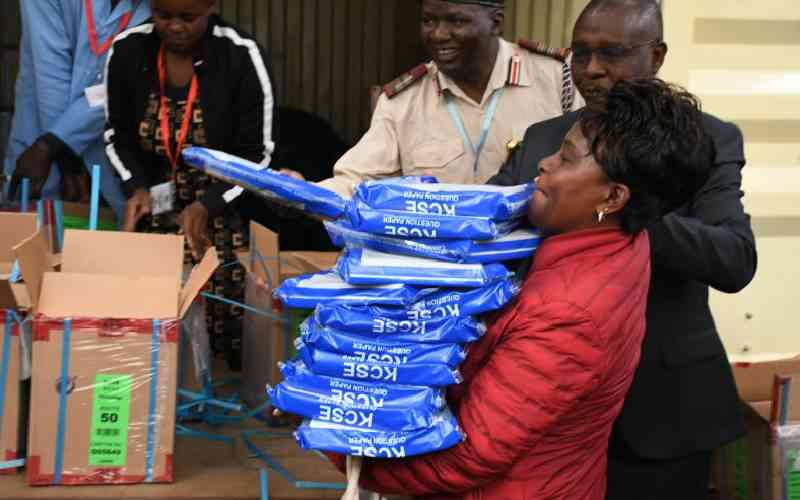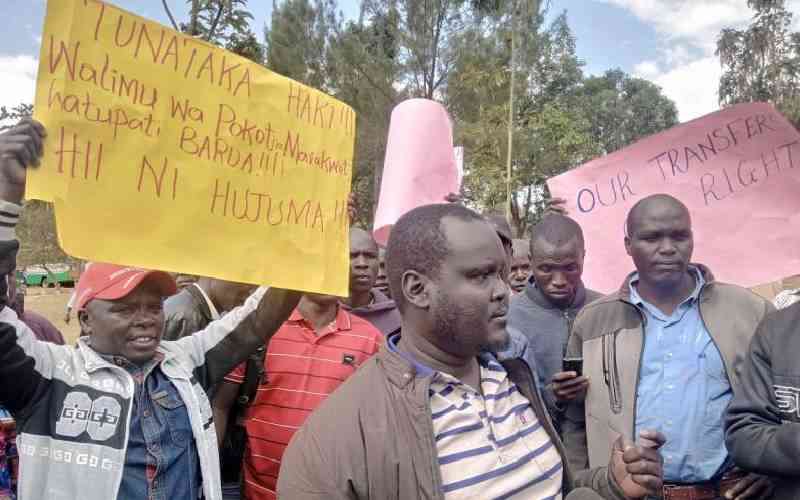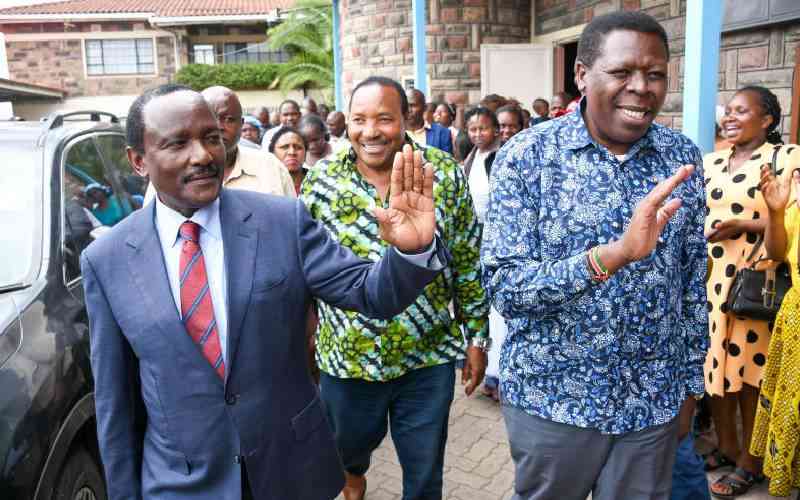By MASIMBA TAFIRENYIKA
LILONGWE, MALAWI: In 2012, Malawi found itself in a tight spot, again. A food crisis set off by erratic rains, rising food prices and economic hardships slowly unfolded. For the first time in several years, the country’s ability to feed its citizens was at risk.
Sadly and unexpectedly, Malawi lost its hard-earned status as an agricultural success story — it used to produce enough maize for its people to eat and still provide a surplus to neighbours.
Many wondered what went wrong and whether there could be lessons for other African countries.
Certainly Kenya, which faces food shortages with alarming regularity, can glean some insight from Malawi.
In the southeast African country, more than 1.63 million people, or 11 per cent of the population, faced severe food shortages in 2012, according to the World Food Programme (WFP), a UN relief agency.
Malawi needed $30 million (Sh2.6 billion at current exchange rates) to the end of that year to cover the shortfall.
Agriculture is the backbone of its economy: four in five people rely on it for income. In Kenya, it is about seven in 10 people.
VULNERABLE FARMERS
Most farmers plant on small plots by hand with little irrigation, and therefore are vulnerable to recurring droughts, notes the UN Food and Agriculture Organisation (FAO). Malawi is home to Africa’s third-largest freshwater lake — Lake Malawi — yet less than 3 per cent of the land is irrigated.
Malawi’s troubles might seem surprising. Yet to those who follow events in the tiny, poor and densely populated landlocked nation, it is less an abrupt change in fortunes than a series of self-inflicted injuries unfolding in slow motion.
Back in 2004, President Bingu wa Mutharika, who died in office in early 2012, rode into power on a promise to increase farm subsidies as part of his Farm Input Subsidy Programme.
Under the plan, the government gave subsidy vouchers to “smallholders to buy a small amount of fertiliser and seed so that they could replenish the soil nutrients, take advantage of improved seed varieties and at least achieve a livable crop from their tiny farms,” says Africa Confidential, a UK-based newsletter.
The vouchers were redeemable for seeds and fertiliser at about one-third of the normal cash cost.
INSTANT BOUNTY
Stay informed. Subscribe to our newsletter
The results were instant. In 2005, a year after expanded subsidies kicked in, Malawi harvested a grain surplus of half a million tonnes.
In subsequent years, it exported grain to Lesotho and Swaziland, as well as 400,000 tonnes of maize to Zimbabwe.
Food experts and advocacy groups took turns at international forums extolling Malawi as an example of Africa’s “green revolution.”
Exploiting his new-found success, President Mutharika called on other African leaders to embrace his policies. But now the tables have turned, and Malawi is facing severe food shortages.
Ironically, even during the years of plenty, Malawi continued to import large quantities of wheat, maize and other cereals, says FAO, and isolated pockets of hunger remained.
In pursuing subsidies, Mutharika defied donor critics who alleged that the programme was riddled with corruption, ran counter to the principles of free markets and was unsustainable.
Indeed, by 2009 the Government was spending 16 per cent of its budget on subsidies.
Over time, Mutharika became autocratic, amid charges of corruption and cronyism. In 2009, he spent more than $20 million (Sh1.7 billion) on a long-range presidential jet.
Worse, he started promoting his brother Peter, then foreign minister, as his successor, further alienating donors, on whom Malawi depends.
As the donors abandoned him, the economy tanked and protesters took to the streets, leading to political instability.
Now that a previously successful experiment with an “African green revolution” is unravelling, what are the lessons for others?
With a population of more than a billion and counting, will Africa ever be able to produce enough food for its people?
The answer to that question is a qualified yes — for it to happen, certain conditions must exist.
LEADERSHIP IS KEY
First, an essential ingredient for success in agriculture is strong political will at the highest level.
In his book, The New Harvest: Agricultural Innovation in Africa, Calestous Juma, a Harvard University professor from Kenya, argues that African leaders should make agriculture a key element of all major economic decisions.
Rhoda Tumusiime, the head of agriculture at the African Union Commission, agrees. She notes that while success in agriculture does not have many drivers, leadership is crucial.
“There must be a key political champion at the head-of-state level to steer and champion a vision on agricultural revolution,” she told the Economic Commission for Africa.
Mutharika not only had the political will, but tried to lead by example. And his anti-poverty policies attracted many advocates.
The director of the New York-based Earth Institute at Columbia University, Jeffrey Sachs, who has worked closely with Malawian authorities to fight poverty, is among them.
“We should … remember a positive legacy of the late President Mutharika, because that legacy holds a key for Africa’s future development and escape from poverty,” he wrote in an op-ed in the New York Times.
“Until his final two years, Mutharika had actually engineered an agriculture-led boom in Malawi, one that pointed a way for Africa to overcome its chronic hunger, food insecurity, and periodic extreme famines,” said Sachs.
He credited the late president for standing “bravely against the arrogance of an ill-informed foreign aid community back in 2005.”
Second, while foreign aid is critical in feeding the hungry and reviving agriculture in Africa, food security is too important to be left to the generosity of external partners.
Food security requires the same seriousness and resources as national security, if not more.
In fact, national security loses its legitimacy if thousands of citizens die not from enemy firepower but from starvation, or risk their lives crossing borders while fleeing from hunger.
FOOD POLICY
And finally, Africa needs a strong food policy backed by resources from African Union (AU) members, to be invested in institutions that promote agriculture.
One tangible AU response has been the Comprehensive Africa Agriculture Development Programme (CAADP), which requires countries that sign up to it to spend at least 10 per cent of their national budgets on agriculture.
CAADP itself has a very small budget, but it uses the little it has to strengthen agricultural institutions and build teams of skilled personnel who roam the continent sharing best practices with national authorities.
“There is no doubt that African agriculture needs strong local institutions to avoid the kind of bubble that we saw in Malawi, which was largely driven by external energy,” said Martin Bwalya, the head of CAADP, alluding to Malawi’s dependence on donors for its short-lived success.
CAADP, which is run by the New Partnership for Africa’s Development (NEPAD), the AU’s development agency, recognises that Africa needs institutions whose effectiveness and shelf-life do not depend on the survival of individuals.
Mutharika tried to follow the path of subsidies and largely succeeded. Countries that have pursued Malawi’s lead have “achieved breakthroughs in farm yields and food production for the first time in their modern history,” said Professor Sachs.
Mutharika’s successor, Joyce Banda, one of Africa’s three female presidents, now has to formulate a new food policy, woo back donors, stabilise the economy and get agriculture back on track.
— Africa Renewal
[email protected]
 The Standard Group Plc is a
multi-media organization with investments in media platforms spanning newspaper
print operations, television, radio broadcasting, digital and online services. The
Standard Group is recognized as a leading multi-media house in Kenya with a key
influence in matters of national and international interest.
The Standard Group Plc is a
multi-media organization with investments in media platforms spanning newspaper
print operations, television, radio broadcasting, digital and online services. The
Standard Group is recognized as a leading multi-media house in Kenya with a key
influence in matters of national and international interest.
 The Standard Group Plc is a
multi-media organization with investments in media platforms spanning newspaper
print operations, television, radio broadcasting, digital and online services. The
Standard Group is recognized as a leading multi-media house in Kenya with a key
influence in matters of national and international interest.
The Standard Group Plc is a
multi-media organization with investments in media platforms spanning newspaper
print operations, television, radio broadcasting, digital and online services. The
Standard Group is recognized as a leading multi-media house in Kenya with a key
influence in matters of national and international interest.








